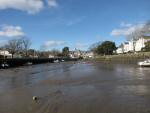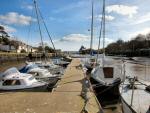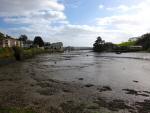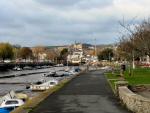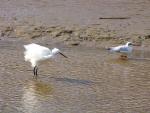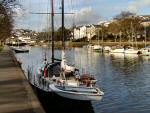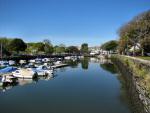| Kingsbridge lies at the tip of the Salcombe estuary right
in the centre of the South Hams with Plymouth to the west, Torbay to the
east and Dartmouth to the north.
The first mention of the town appears in 962 in a Anglo-Saxon charter
of King Edgar where it is known as ‘Cinges bricge'. There was no
real settlement here though until after the coming of the Normans when
the lands around Kingsbridge became owned by the Abbots of Buckfast Abbey.
They established a settlement here and by 1219 it had a charter for holding
a market and by 1238 was a borough. With its position on the estuary
it became an outlet for the produce from the Abbey's estate, especially
the valuable commodity of wool. Mills were also built using the power
of the tidal water, the last not closing until 1967. Outshone as a port
by Dartmouth and Plymouth, Kingsbridge remained a thriving centre for
trade in local produce and was granted a royal charter for an annual
fair and a weekly market. The parish church of St Edmunds was built by
the monks and financed
from the market profits in the early part of the 15th century.The town
passed into private hands with the Dissolution of the Monasteries in
1538 but continued to prosper and by the 17th century Kingsbridge had
100 houses.
The town continued to grow exporting wool, timber, barley, corn and
cider from the locality with a large upsurge in trade during the Napoleonic
wars. This period saw the building of formal shipyards rather than the
casual building of local craft on nearby beaches, the remnants of this
industry can still be seen today at the Crabshell. Transport was always
a problem for the area, the only viable method being by sea. This changed
with first the advent of horse drawn coach travel followed by the arrival
of the railway in 1893 and finally the first motor car in 1898. This
increase in access opened the way to the start of the tourist trade,
a development that has continued to this day with Kingsbridge being a
focal point for visitors to this area. The medieval tradition of markets
continues every Tuesday and Saturday but the railway was a victim of
the Beeching cuts, closing in 1963.
|
